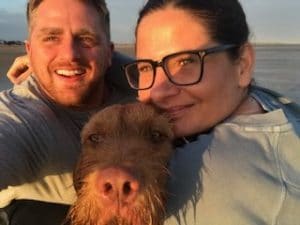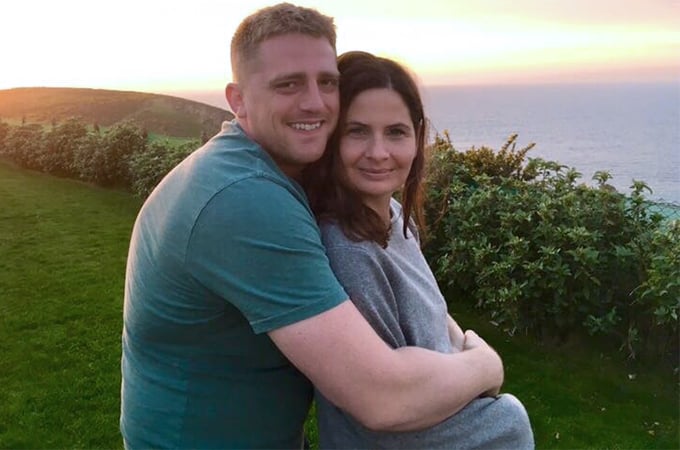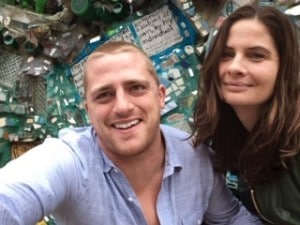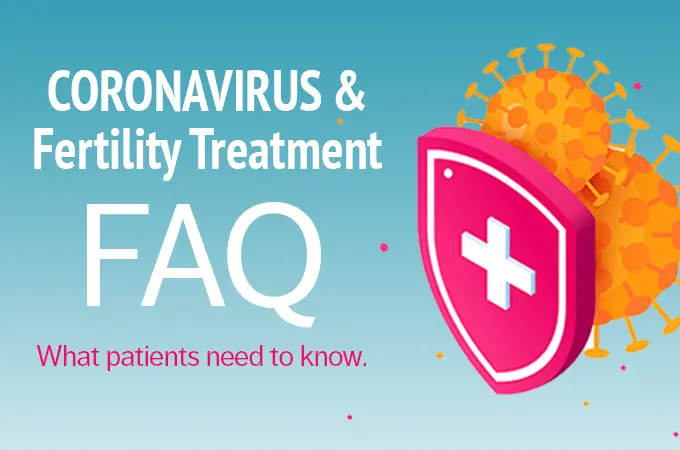In September 2020, while the COVID-19 pandemic continued to spread across the globe, Elizabeth found herself sitting at an empty gate in London Heathrow International Airport, feeling certain that she was one of the only people in the world crazy enough to fly to the U.S., but when she reminded herself why she was making the trip, she knew she was making the right choice. Elizabeth was headed to Shady Grove Fertility (SGF) in Rockville, MD, where she would undergo an embryo transfer that was years in the making.
Elizabeth had never felt that deep seeded yearning for children and motherhood that some women speak about. It’s not that she never wanted children, on the contrary, Elizabeth knew that raising a child would be one of the most profound and rewarding experiences that life had to offer, she just wasn’t in any rush. She figured, eventually, when the timing felt right, or perhaps after meeting the right person, she’d think about the prospect more seriously. Unfortunately for cis gender women, ovaries follow a different timeline.
Time to Start a Family
When Elizabeth “eventually” met Paul and “the time felt right” to start a family, she soon learned that her age would prove to be an insurmountable obstacle to conceiving without any medical interventions.
The pair began pursuing IVF treatment in 2017 and although Elizabeth was in her 40s, they still thought their chances of success were pretty good. After all, they had seen countless women in their 40s have children through IVF, and they never imagined that Elizabeth wouldn’t be one of them. For many, though, fertility treatment can feel like taking three steps forward, just to take two steps back again, and Elizabeth and Paul were not spared this fate. They tried for years; years of being poked and prodded and encouraged and then devastated all over again. They did seven cycles at two different clinics, until finally, their doctor sat them down and told them the hard truth; at 44 years old, Elizabeth had less than a 3 percent chance of having a child with her own eggs.
“I never expected this to happen to me, for this to be my story,” Elizabeth said. “I could have kept going. I don’t give up. I don’t like losing.”
Overcoming Infertility Internationally
But time humbles us all, and Elizabeth is a pragmatist. Still the choice to use donor egg was a difficult one to make. She was surprised by the grief she felt, like she was mourning her genetic legacy. She was scared too – scared that she wouldn’t bond with a baby that wasn’t biologically hers, worried that it wouldn’t feel right somehow.
These worries melted away as soon as she met Dr. Levy at Shady Grove Fertility. Because the U.K. does not allow anyone to pay for someone else’s eggs or sperm, donation is extremely rare. Instead, British patients head to Greece or Spain or Turkey or any country where egg donation is more readily available. Elizabeth and Paul looked at clinics in several countries, but when they were referred to Shady Grove Fertility, their choice was clear. SGF had the highest success rates, an experienced team dedicated to managing international patients, and access to egg banks far larger, and with far more information, than any other clinic that they had considered. When they arrived in the States, they were immediately reassured.
“Dr. Levy made a genuine effort to connect with us,” Elizabeth said.
The ease and confidence he projected was infectious, and when Elizabeth shared her doubts and fears about using a donor, Dr. Levy told her that everything she was feeling was normal, but in his 30+ years of experience, he had seen every single one of those thoughts disappear as soon as the patient held her baby in her arms.
On the plane back to London, Paul and Elizabeth discussed all that lay ahead and felt confident and supported by the entire SGF team.
Choosing the Right Egg Donor
The first time Elizabeth went to the egg bank website to review donor profiles, she instantly slammed her computer shut before the page had even loaded. It was one thing to accept that they would be using a donor, but actually sitting down and choosing who that person would be was something different altogether.
It took 2 months for Elizabeth to look at the donors again. Over time she and Paul developed the habit of scrolling through the profiles together in bed at the end of the day. In life Elizabeth was decisive and commanding, but when it came to such an existential issue, she was uncomfortable and struggled to commit.
When they finally made their choice, Elizabeth made Paul press the button, but first, she insisted they sleep on it for one more night. The next morning, she told Paul that she was confident and reassured by the choice they had made, and Paul pressed the button. Later that day, she and Paul learned their request wasn’t accepted.
Two steps forward, three steps back.
This happened again a few weeks later, and exhausted by the emotional toll of it all, she called SGF to ask what she was doing wrong. As it turned out, both of the women they had requested had been chosen out from under them, while they were sleeping on it. After that she became methodical. She got into a rhythm and made it her job to find and request the right donor before it was too late.
It happened in a taxi. She was coming home from time spent with friends, scrolling through profiles, when Elizabeth found a profile that she felt, in her gut, was her donor.
“I can’t wait to show you this profile,” she quickly texted Paul. “DON’T WAIT, PRESS IT NOW!” He responded. Elizabeth was flustered, she had never been the one to press the button before, to actively take that leap of faith, but she knew that another rejection would be far worse than whatever she was feeling in that moment. So, she pressed the button and set down her phone.

“I’m proud of our donor,” Elizabeth said, “I’ll be proud to show her to our kid one day.”
How the COVID-19 Pandemic Temporarily Paused Parenthood
Although it had taken some time for Elizabeth to come around to the idea of using an egg donor, once she found the right donor, she was all in. Paul already had a frozen sperm sample ready at the SGF lab, and they both eagerly awaited the many updates SGF provided as the donor underwent the egg retrieval process.
Everything was going according to plan; the donor had produced 5 healthy embryos and Elizabeth’s embryo transfer was scheduled for March, but then the lockdowns began and once again, Elizabeth and Paul were forced to take another step backward. In these darker days, Elizabeth was happy that she waited to find Paul, even if waiting meant dealing with all of the infertility treatment they had gone through. He had a way of making everything feel lighter. He made her laugh and helped her stay optimistic even when it felt like the world was working against her.
After taking a 6-week hiatus, SGF resumed frozen embryo transfers in late May and by the end of Summer it seemed like the global rate of COVID-19 infections were dipping, so in September Elizabeth was on that plane.
When Elizabeth arrived at the SGF office, it was much quieter than she remembered. The clinic was operating with a skeleton crew and the temperature check, hand sanitizing stations, and mask clad staff were all a stark reminder of the difficult times the pandemic has wrought. By and large though, the embryo transfer went just as she had expected it to, and she quickly returned to the U.K.
Paul picked her up at the airport and the two drove straight to the English countryside to quarantine in peace and quiet. Paul cooked and cared for her and every now and then, he suggested she take a pregnancy test. But each time he did, the fear of facing another disappointment felt like more than she could handle.
“Let’s just wait until the appointment, it’s too early now,” she’d tell him. And then, after their 2-week quarantine was nearly up, Elizabeth decided not knowing was harder than knowing the news was bad, so she took a pregnancy test. Her experience with infertility treatment over the years had left its scars and even the best news was laced with anxiety and fear. Despite herself though, her heart leapt when the test turned positive, and just as she had a good feeling about their donor, she had a good feeling that this time the pregnancy would stick.
As of November of 2020, Elizabeth is 9 weeks pregnant. It’s still early days, but she feels good, hopeful and optimistic about the outcome. After a long and laborious trek through the tundra that infertility treatment can often feel like, she and Paul are starting to see the light on the other side of the storm, and they know it glows more brightly than ever, thanks to SGF.
To learn more information about the egg donor process, please click here.
For further inspiration from an SGF patient who underwent the donor egg process, click here.




